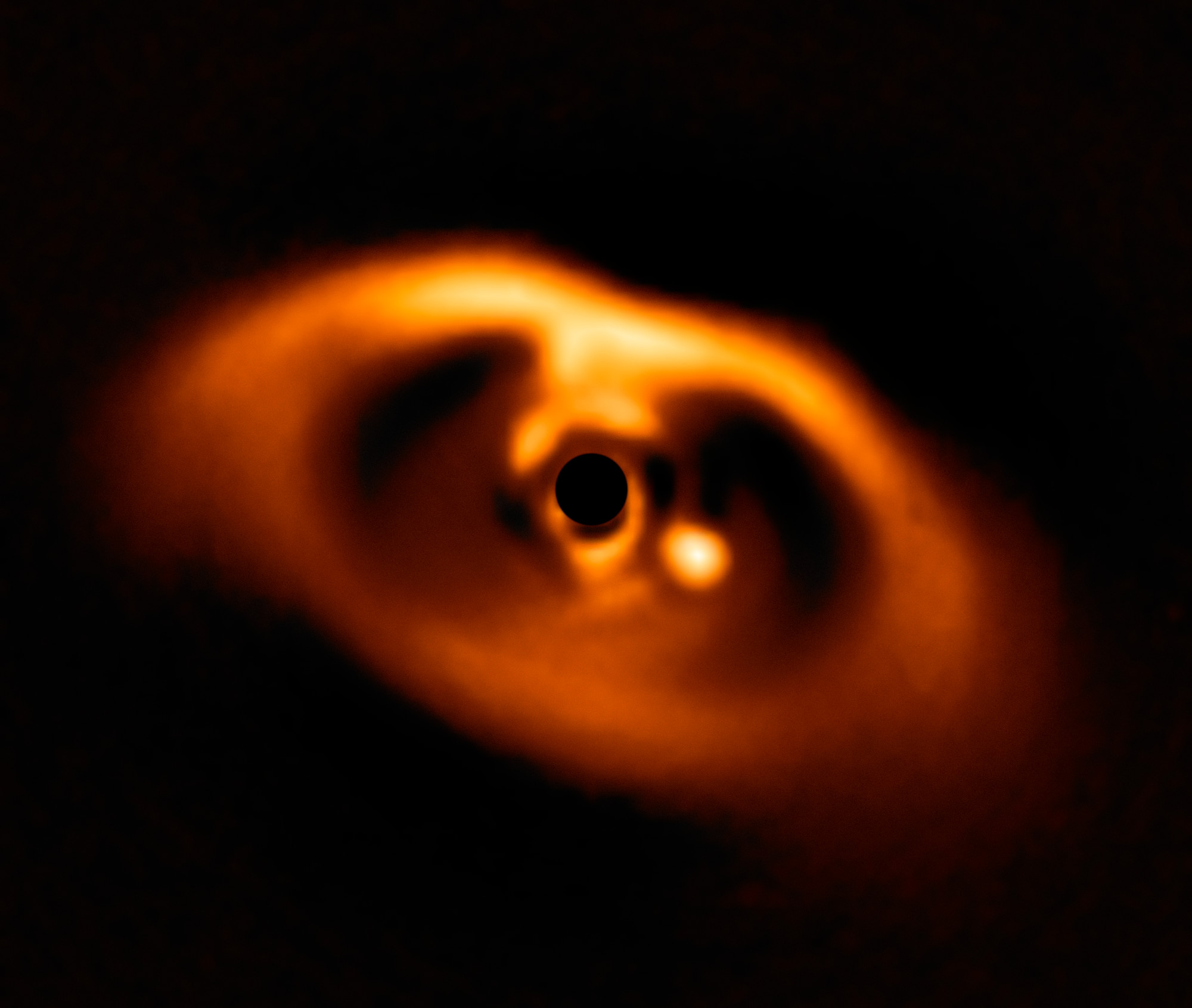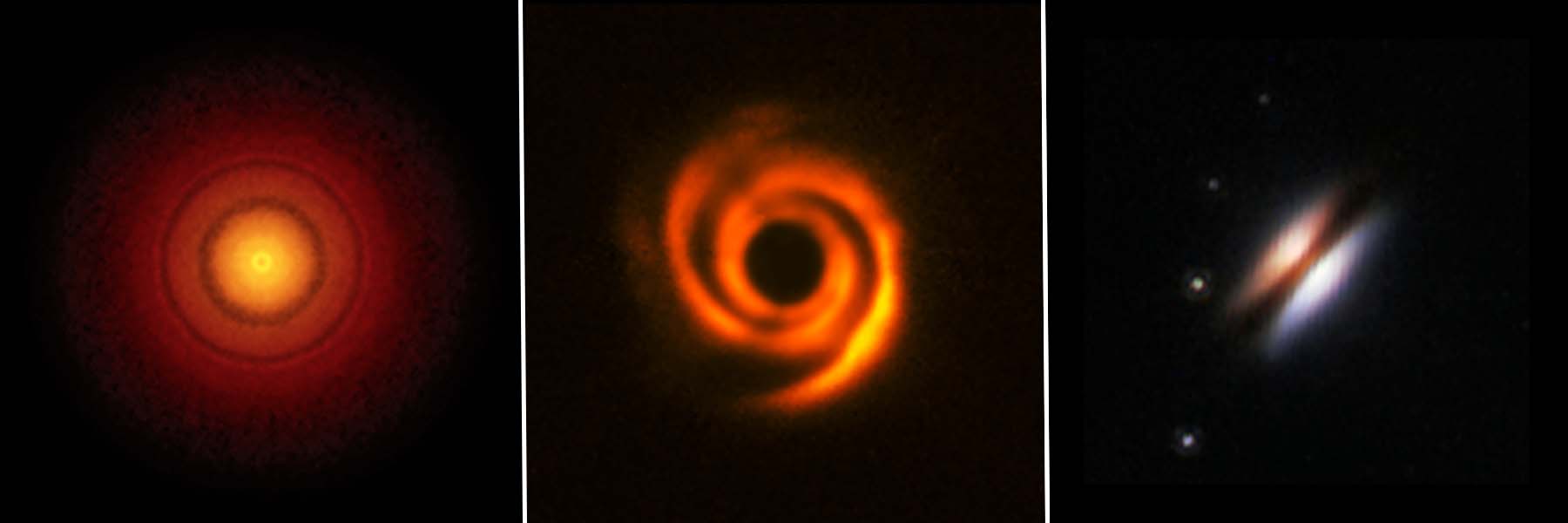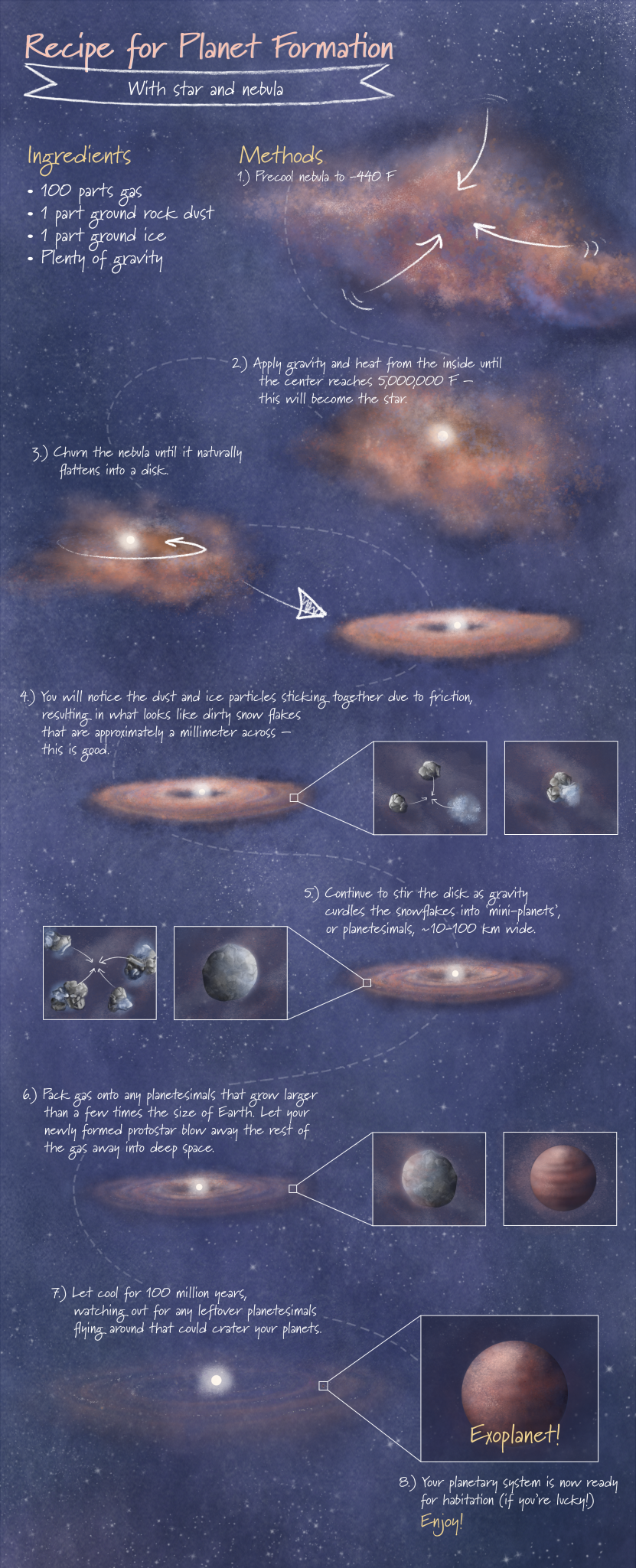
We live in a mature solar system—eight planets and several dwarf planets (like Pluto) have formed, the latter within the rock- and debris-filled region known as the Kuiper Belt. If we could turn back time, what would we see as our solar system formed? While we can’t answer this question directly, researchers can study other systems that are actively forming—along with the mix of gas and dust that encircles their still-forming stars—to learn about this process.

A team led by Dr. Thomas Henning of the Max Planck Institute for Astronomy in Heidelberg, Germany, will employ NASA’s upcoming James Webb Space Telescope to survey more than 50 planet-forming disks in various stages of growth to determine which molecules are present and ideally pinpoint similarities, helping to shape what we know about how solar systems assemble.
Their research with Webb will specifically focus on the inner disks of relatively nearby, forming systems. Although information about these regions has been obtained by previous telescopes, none match Webb’s sensitivity, which means many more details will pour in for the first time. Plus, Webb’s space-based location about a million miles (1.5 million kilometers) from Earth will give it an unobstructed view of its targets. “Webb will provide unique data that we can’t get any other way,” said Inga Kamp of the Kapteyn Astronomical Institute of the University of Groningen in the Netherlands. “Its observations will provide molecular inventories of the inner disks of these solar systems.”
This research program will primarily gather data in the form of spectra. Spectra are like rainbows—they spread out light into its component wavelengths to reveal high-resolution information about the temperatures, speeds, and compositions of the gas and dust. This incredibly rich information will allow the researchers to construct far more detailed models of what is present in the inner disks—and where. “If you apply a model to these spectra, you can find out where molecules are located and what their temperatures are,” Henning explained.
These observations will be incredibly valuable in helping the researchers pinpoint similarities and differences among these planet-forming disks, which are also known as protoplanetary disks. “What can we learn from spectroscopy that we can’t learn from imaging? Everything!” Ewine van Dishoeck of Leiden University in the Netherlands exclaimed. “One spectrum is worth a thousand images.”

A ‘Mountain’ of New Data
Researchers have long studied protoplanetary disks in a variety of wavelengths of light, from radio to near-infrared. Some of the team’s existing data are from the Atacama Large Millimeter/submillimeter Array (ALMA) in Chile, which collects radio light. ALMA excels at constructing images of the outer disks. If you were to compare the span of their outer disks to the size of our Solar System, this region is past Saturn’s orbit. Webb’s data will complete the picture by helping researchers model the inner disks.
Some data already exist about these inner disks—NASA’s retired Spitzer Space Telescope served as a pathfinder—but Webb’s sensitivity and resolution are required to identify the precise quantities of each molecule as well as the elemental compositions of the gas with its data, known as spectra. “What used to be a very blurry peak in the spectrum will consist of hundreds if not thousands of detailed spectral lines,” van Dishoeck said.
Webb’s specialty in mid-infrared light is particularly important. It will enable researchers to identify the “fingerprints” of molecules like water, carbon dioxide, methane, and ammonia—which can’t be identified with any other existing instruments. The observatory will also determine how starlight impacts the chemistry and physical structures of the disks.
Protoplanetary disks are complex systems. As they form, their mix of gas and dust is distributed into rings across the system. Their materials travel from the outer disk to the inner disk—but how? “The inner portion of the disk is a very dynamic place,” explains Tom Ray of the Dublin Institute for Advanced Studies in Ireland. “It’s not only where terrestrial-type planets form, but it’s also where supersonic jets are launched by the star.”
Jets emitted by the star lead to a mixing of elements in the inner and outer disks, both by sending out particles and permitting other particles to move inward. “We think that as material leaves, it loses its spin, or angular momentum, and that this allows other material to move inward,” Ray continued. “These exchanges of material will obviously impact the chemistry of the inner disk, which we’re excited to explore with Webb.”
Credits: NASA’s Goddard Space Flight Center; NASA/JPL-Caltech
Exciting Insights Await
PDS 70 is farther at 370 light-years away. It also has a large gap in its inner ring, plus data have revealed that two forming planets, known as protoplanets, are present and gathering material. “Webb’s mid-infrared measurements will help us refine what we know about them, as well as the material around them,” Kamp explained.
With dozens of targets on their list, it’s difficult for team members to play favorites. “I love them all,” Henning said. “One question I’d like to answer concerns the connection between the composition of planet-forming disks and the planets themselves. With Webb, we will observe far more detail about which types of material are available for a potential planet to accrete.”
After refining the data, his team will apply the discrete data points to models. “This will allow us to do a graphic reconstruction of these systems,” he continued. These models will be shared with the astronomical community, enabling other scientists to examine the data, and make their own projections or glean new findings. These studies will be conducted through a Guaranteed Time Observations (GTO) program.
The James Webb Space Telescope will be the world’s premier space science observatory when it launches in 2021. Webb will solve mysteries in our solar system, look beyond to distant worlds around other stars, and probe the mysterious structures and origins of our universe and our place in it. Webb is an international program led by NASA with its partners, ESA (European Space Agency) and the Canadian Space Agency.
Caption for the banner: PDS 70 is approximately 370 light-years away and features a large gap in its inner ring. The European Southern Observatory’s Very Large Telescope provided the first clear image of a planet forming around the central star in 2018. The planet is a bright point to the right of the center of the image. The central star is black since its light was blocked by an instrument known as a coronagraph. A second planet has also been detected. This system is a future target of NASA’s James Webb Space Telescope. Credit: ESO/A. Müller et al.
By Claire Blome
Space Telescope Science Institute, Baltimore Md.
Media contact:
Laura Betz
NASA’s Space Flight Center, Greenbelt, Md.
Laura.e.betz@nasa.gov

























